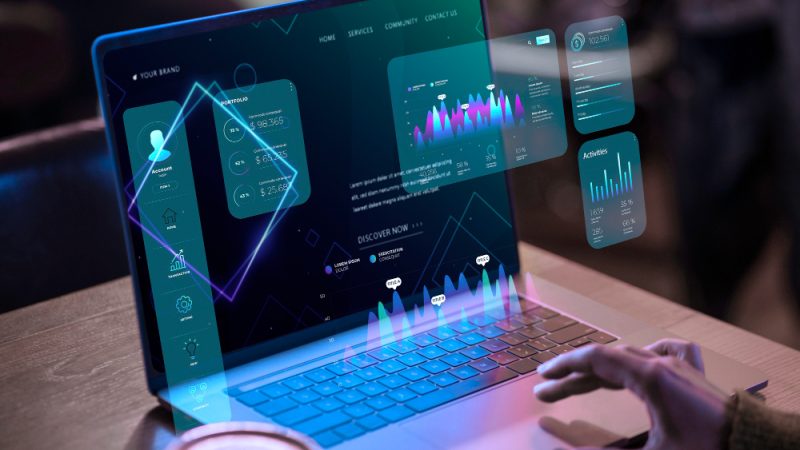What You Need to Know About Robotic Process Automation in Accounting

Robotic Process Automation (RPA) is a technology that has been transforming various industries, including the accounting sector. RPA is the use of software robots to automate repetitive and manual tasks that humans have been doing for a long time. RPA in finance and accounting is becoming increasingly popular due to its ability to save time, reduce errors, and increase efficiency.
Robotic Process Automation makes tasks as simple as copying and pasting data from one system to another or as complex as analyzing large amounts of data. RPA robots are programmed to mimic human actions, such as clicking buttons, entering data, and navigating systems. RPA robots can work 24/7, without getting tired, making mistakes, or taking breaks, which makes them highly efficient.
How Does RPA Work in Accounting?
In accounting, RPA can be used to automate a variety of tasks, such as accounts payable/receivable, general ledger entries, financial reporting, and compliance. Let’s take accounts payable as an example. Traditionally, accounts payable involves manually processing invoices, matching them with purchase orders, and entering data into the accounting system. This process can be time-consuming and prone to errors. With RPA, the software robot can be programmed to retrieve invoices from email or a vendor portal, extract data from the invoice, validate it against the purchase order, and enter it into the accounting system. This process can be done in a matter of seconds, with a high level of accuracy.
Pros of RPA in Accounting
Robotic Process Automation (RPA) has revolutionized the way accounting tasks are performed. Here are some of the pros of RPA in accounting:
- Increased efficiency: RPA can automate repetitive and time-consuming tasks such as data entry, reconciliation, and reporting. This not only saves time but also reduces the risk of errors.
- Cost-effective: RPA eliminates the need for manual labor, which can save costs in the long run. It also reduces the need for hiring additional staff during peak periods.
- Improved accuracy: RPA uses algorithms to perform tasks, reducing the risk of human errors. This ensures that financial reports are accurate and comply with regulations.
- Enhanced analytics: RPA can collect and analyze large amounts of data quickly and accurately, providing insights that help in decision-making.
- Scalability: RPA can be easily scaled up or down depending on the accounting needs of the organization. This makes it a flexible solution that can adapt to changing business requirements.
Overall, RPA in accounting offers numerous benefits that can help organizations improve efficiency, accuracy, and cost-effectiveness.
How to Implement RPA in Accounting
Robotic Process Automation (RPA) is a powerful tool that can revolutionize the accounting industry. By automating repetitive and time-consuming tasks, RPA can significantly increase efficiency and accuracy while reducing costs. Here are some steps to implement RPA in accounting:
- Identify processes that can be automated: Start by identifying the most tedious and repetitive tasks in your accounting processes. These could include data entry, reconciliations, and report generation.
- Evaluate RPA tools: There are several RPA tools available in the market. Evaluate the tools based on factors such as ease of use, scalability, and compatibility with existing systems.
- Develop a pilot project: Start with a small pilot project to test the selected RPA tool. This will help you identify any issues and fine-tune the automation process.
- Train the team: Train your team on how to use the RPA tool. This will help them understand how it works and how it can help them in their day-to-day tasks.
- Monitor and evaluate: Once the RPA tool is implemented, monitor its performance and evaluate its impact on productivity, accuracy, and cost savings. Use this data to make any necessary adjustments and improve the automation process.
Implementing RPA in accounting can be a game-changer for your organization. By automating repetitive tasks, you can free up your team to focus on more strategic tasks and increase overall productivity.
Future of RPA in Accounting
The future of RPA in accounting looks bright. According to a report by Grand View Research, the global RPA market size is expected to reach $25.56 billion by 2027, growing at a CAGR of 33.6% from 2020 to 2027. This growth is driven by the increasing need for automation and the rising demand for cost-efficient business processes. RPA is also expected to evolve to include more advanced technologies, such as artificial intelligence and machine learning, which can enable robots to learn from experience and make decisions.
The accounting industry is set to benefit greatly from the growth of the RPA market. With the increasing need for automation and cost-efficient business processes, RPA can help accounting firms improve their efficiency and reduce costs by automating repetitive tasks. As RPA technology evolves to include more advanced technologies like artificial intelligence and machine learning, robots will be able to learn from experience and make decisions, further streamlining accounting processes. Overall, the future of RPA in accounting looks bright, and firms that embrace this technology will likely see significant benefits in the years to come.
Conclusion
RPA is transforming the accounting industry by automating manual and repetitive tasks, saving time, reducing errors, and increasing efficiency. While there are some challenges in implementing RPA, the benefits outweigh the challenges. RPA is expected to continue to grow in the future, with the integration of more advanced technologies. Accounting professionals need to embrace RPA and learn how to use it to stay competitive in the industry.






